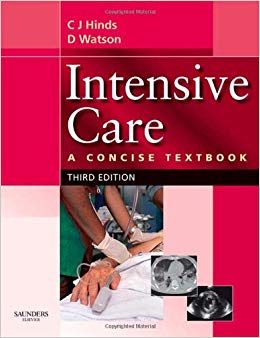
By Charles J. Hinds FRCP FRCA, J. David Watson BSc(Hons) FRCA
Paperback: 600 pages
Publisher: Saunders Ltd.; 3 edition (September 2, 2008)
Language: English
ISBN-10: 0702025968
ISBN-13: 978-0702025969
Now in its third edition, ‘Intensive Care: A Concise Textbook’ continues to provide an excellent introductory text to the practice of critical care medicine. Extensively revised, expanded and updated, the format of the new edition has been radically altered to make the text more readable and the information even more accessible. Comprehensive yet concise, the book provides a sound working knowledge of the discipline, is packed with information and is extensively referenced. Current evidence based guidelines for managing critically ill patients with complex pathophysiology and multisystem involvement are highlighted throughout.
- Provides a balanced view of current controversies with citation of the most relevant publications
- Information readily accessible through the extensive use of bullet points, italics to highlight key words, headings, sub-headings, tables, figures and diagrams
- Written entirely by two authors to ensure consistency of style and content, each chapter has been reviewed by an expert to ensure completion, accuracy and currency
- Ideal for physicians preparing for the increasingly important examinations in the specialty
- Includes summary tables of recommended approaches to clinical management
- Also suitable for trainees in other acute specialities who are increasingly becoming involved in the management of critically ill patients and those who may be sitting other postgraduate exams that include aspects of intensive care and acute medicine in the syllabus
- All content fully updated and strongly evidence-based, with clear guidelines for the management of specific conditions
- Extensive new referencing focuses on key prospective, randomised, controlled trials, meta-analyses and systematic reviews
- Additional topics such as relative adrenal suppression, tight glycaemic control, acute coronary syndromes, ventilator-associated and community-acquired pneumonia, non-invasive and ‘protective’ ventilation, meningo-encephalitis and intracranial haemorrhage
- Updated antibiotic guidelines and the latest ALS/ATLS and ‘surviving sepsis campaign guidelines’
- More detail given to a number of topics such as fluid and electrolyte balance, nutrition, and alternatives to the pulmonary artery catheter for haemodynamic monitoring
Premium Content
Login to buy access to this content.What's Your Reaction?
Excited
0
Happy
0
In Love
0
Not Sure
0
Silly
0

